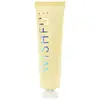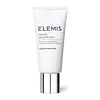What's inside
What's inside
 Key Ingredients
Key Ingredients

 Benefits
Benefits

 Concerns
Concerns

 Ingredients Side-by-side
Ingredients Side-by-side

Water
Skin ConditioningCellulose
AbsorbentButylene Glycol
HumectantPropylene Glycol
HumectantAlcohol
Antimicrobial1,2-Hexanediol
Skin ConditioningBromelain
Skin ConditioningAnanas Sativus Fruit Extract
Skin ConditioningPapain
Skin ConditioningCarica Papaya Fruit Extract
Skin ConditioningCitric Acid
BufferingLactic Acid
BufferingMalic Acid
BufferingSalicylic Acid
MaskingTartaric Acid
BufferingGlycolic Acid
BufferingZingiber Officinale Root Extract
MaskingGlycerin
HumectantRosa Centifolia Flower Extract
AstringentCocos Nucifera Fruit Extract
EmollientPrunus Amygdalus Dulcis Oil
Skin ConditioningSalix Alba Bark Extract
AstringentSaccharum Officinarum Extract
MoisturisingAcer Saccharum Extract
Skin ConditioningCamellia Japonica Leaf Extract
Skin ConditioningCitrus Paradisi Seed Extract
MaskingPhellodendron Amurense Bark Extract
Skin ConditioningMannitol
HumectantPsidium Guajava Leaf Extract
AstringentCamellia Sinensis Leaf Extract
AntimicrobialMangifera Indica Fruit Extract
Skin ConditioningMusa Sapientum Fruit Extract
Skin ConditioningPassiflora Edulis Fruit Extract
Skin ConditioningCitrus Aurantium Dulcis Fruit Extract
MaskingCitrus Limon Fruit Extract
MaskingVaccinium Myrtillus Fruit Extract
Skin ConditioningMagnolia Officinalis Bark Extract
AntimicrobialSodium Hyaluronate
HumectantEthylhexylglycerin
Skin ConditioningGluconolactone
Skin ConditioningPolysorbate 20
EmulsifyingCarbomer
Emulsion StabilisingTromethamine
BufferingPropanediol
SolventDisodium EDTA
Phenoxyethanol
PreservativeBenzyl Alcohol
PerfumingParfum
MaskingWater, Cellulose, Butylene Glycol, Propylene Glycol, Alcohol, 1,2-Hexanediol, Bromelain, Ananas Sativus Fruit Extract, Papain, Carica Papaya Fruit Extract, Citric Acid, Lactic Acid, Malic Acid, Salicylic Acid, Tartaric Acid, Glycolic Acid, Zingiber Officinale Root Extract, Glycerin, Rosa Centifolia Flower Extract, Cocos Nucifera Fruit Extract, Prunus Amygdalus Dulcis Oil, Salix Alba Bark Extract, Saccharum Officinarum Extract, Acer Saccharum Extract, Camellia Japonica Leaf Extract, Citrus Paradisi Seed Extract, Phellodendron Amurense Bark Extract, Mannitol, Psidium Guajava Leaf Extract, Camellia Sinensis Leaf Extract, Mangifera Indica Fruit Extract, Musa Sapientum Fruit Extract, Passiflora Edulis Fruit Extract, Citrus Aurantium Dulcis Fruit Extract, Citrus Limon Fruit Extract, Vaccinium Myrtillus Fruit Extract, Magnolia Officinalis Bark Extract, Sodium Hyaluronate, Ethylhexylglycerin, Gluconolactone, Polysorbate 20, Carbomer, Tromethamine, Propanediol, Disodium EDTA, Phenoxyethanol, Benzyl Alcohol, Parfum
Water
Skin ConditioningPropylene Glycol
HumectantOctyldodecanol
EmollientGlyceryl Stearate Se
EmulsifyingCetearyl Alcohol
EmollientGlycerin
HumectantC12-16 Alcohols
EmollientHelianthus Annuus Seed Oil
EmollientNiacinamide
SmoothingXanthan Gum
EmulsifyingPhenoxyethanol
PreservativePalmitic Acid
EmollientHydrogenated Lecithin
EmulsifyingParfum
MaskingPapain
Skin ConditioningChlorphenesin
AntimicrobialLactis Proteinum
Skin ConditioningAnanas Sativus Fruit Extract
Skin ConditioningSodium Dehydroacetate
PreservativeDisodium EDTA
Porphyridium Cruentum Extract
Skin ConditioningCinnamyl Alcohol
PerfumingFucus Vesiculosus Extract
EmollientCapsicum Annuum Fruit Extract
AntimicrobialTocopherol
AntioxidantCitronellol
PerfumingGeraniol
PerfumingLimonene
PerfumingCitral
PerfumingMentha Arvensis Leaf Oil
MaskingCuminum Cyminum Seed Oil
MaskingWater, Propylene Glycol, Octyldodecanol, Glyceryl Stearate Se, Cetearyl Alcohol, Glycerin, C12-16 Alcohols, Helianthus Annuus Seed Oil, Niacinamide, Xanthan Gum, Phenoxyethanol, Palmitic Acid, Hydrogenated Lecithin, Parfum, Papain, Chlorphenesin, Lactis Proteinum, Ananas Sativus Fruit Extract, Sodium Dehydroacetate, Disodium EDTA, Porphyridium Cruentum Extract, Cinnamyl Alcohol, Fucus Vesiculosus Extract, Capsicum Annuum Fruit Extract, Tocopherol, Citronellol, Geraniol, Limonene, Citral, Mentha Arvensis Leaf Oil, Cuminum Cyminum Seed Oil
 Reviews
Reviews

Ingredients Explained
These ingredients are found in both products.
Ingredients higher up in an ingredient list are typically present in a larger amount.
Ananas Sativus Fruit Extract comes from the pineapple fruit. Pineapples are native to South America. The components of pineapple give it mild exfoliating and skin nourishing properties.
Pineapples contain Vitamin C, Vitamin B6, copper, potassium, niacin, and other minerals. It also contains many phytochemicals, including ferulic acid, coumaric acid, arbutin, and more. These help condition the skin.
Bromelain can be found in all parts of a pineapple. It is a mixture of enzymes and is mildly exfoliating.
Learn more about Ananas Sativus Fruit ExtractDisodium EDTA plays a role in making products more stable by aiding other preservatives.
It is a chelating agent, meaning it neutralizes metal ions that may be found in a product.
Disodium EDTA is a salt of edetic acid and is found to be safe in cosmetic ingredients.
Learn more about Disodium EDTAGlycerin is already naturally found in your skin. It helps moisturize and protect your skin.
A study from 2016 found glycerin to be more effective as a humectant than AHAs and hyaluronic acid.
As a humectant, it helps the skin stay hydrated by pulling moisture to your skin. The low molecular weight of glycerin allows it to pull moisture into the deeper layers of your skin.
Hydrated skin improves your skin barrier; Your skin barrier helps protect against irritants and bacteria.
Glycerin has also been found to have antimicrobial and antiviral properties. Due to these properties, glycerin is often used in wound and burn treatments.
In cosmetics, glycerin is usually derived from plants such as soybean or palm. However, it can also be sourced from animals, such as tallow or animal fat.
This ingredient is organic, colorless, odorless, and non-toxic.
Glycerin is the name for this ingredient in American English. British English uses Glycerol/Glycerine.
Learn more about GlycerinPapain is an enzyme found naturally in the papaya plant's leaves, fruit, and roots. It has antimicrobial, soothing, and wound healing properties.
Glycine and Vitamin A are naturally found in papain.
While papain is often touted as skin-lightening, further studies are needed to prove this. However, papain has been shown to help soothe acne-inflammation.
Papain belongs to a class of enzymes called proteolytic enzymes. These enzymes break down peptides and amino acids.
Some studies found papain to be a potential skin sensitizer and allergen. Those with latex allergies might also be allergic to papaya.
Learn more about PapainParfum is a catch-all term for an ingredient or more that is used to give a scent to products.
Also called "fragrance", this ingredient can be a blend of hundreds of chemicals or plant oils. This means every product with "fragrance" or "parfum" in the ingredients list is a different mixture.
For instance, Habanolide is a proprietary trade name for a specific aroma chemical. When used as a fragrance ingredient in cosmetics, most aroma chemicals fall under the broad labeling category of “FRAGRANCE” or “PARFUM” according to EU and US regulations.
The term 'parfum' or 'fragrance' is not regulated in many countries. In many cases, it is up to the brand to define this term.
For instance, many brands choose to label themselves as "fragrance-free" because they are not using synthetic fragrances. However, their products may still contain ingredients such as essential oils that are considered a fragrance by INCI standards.
One example is Calendula flower extract. Calendula is an essential oil that still imparts a scent or 'fragrance'.
Depending on the blend, the ingredients in the mixture can cause allergies and sensitivities on the skin. Some ingredients that are known EU allergens include linalool and citronellol.
Parfum can also be used to mask or cover an unpleasant scent.
The bottom line is: not all fragrances/parfum/ingredients are created equally. If you are worried about fragrances, we recommend taking a closer look at an ingredient. And of course, we always recommend speaking with a professional.
Learn more about ParfumPhenoxyethanol is a preservative that has germicide, antimicrobial, and aromatic properties. Studies show that phenoxyethanol can prevent microbial growth. By itself, it has a scent that is similar to that of a rose.
It's often used in formulations along with Caprylyl Glycol to preserve the shelf life of products.
Propylene Glycol is an odorless, colorless liquid. As a humectant, it helps skin retain moisture. It also aids in delivering active ingredients.
Another role of this ingredient is preventing a product from melting or freezing. Propylene glycol also adds antimicrobrial properties to a product, elongating product lifespan.
This ingredient is considered an organic alcohol and commonly added into both cosmetics and foods.
Those with sensitive skin or conditions may develop a rash when using this ingredient.
Learn more about Propylene GlycolWater. It's the most common cosmetic ingredient of all. You'll usually see it at the top of ingredient lists, meaning that it makes up the largest part of the product.
So why is it so popular? Water most often acts as a solvent - this means that it helps dissolve other ingredients into the formulation.
You'll also recognize water as that liquid we all need to stay alive. If you see this, drink a glass of water. Stay hydrated!
Learn more about Water